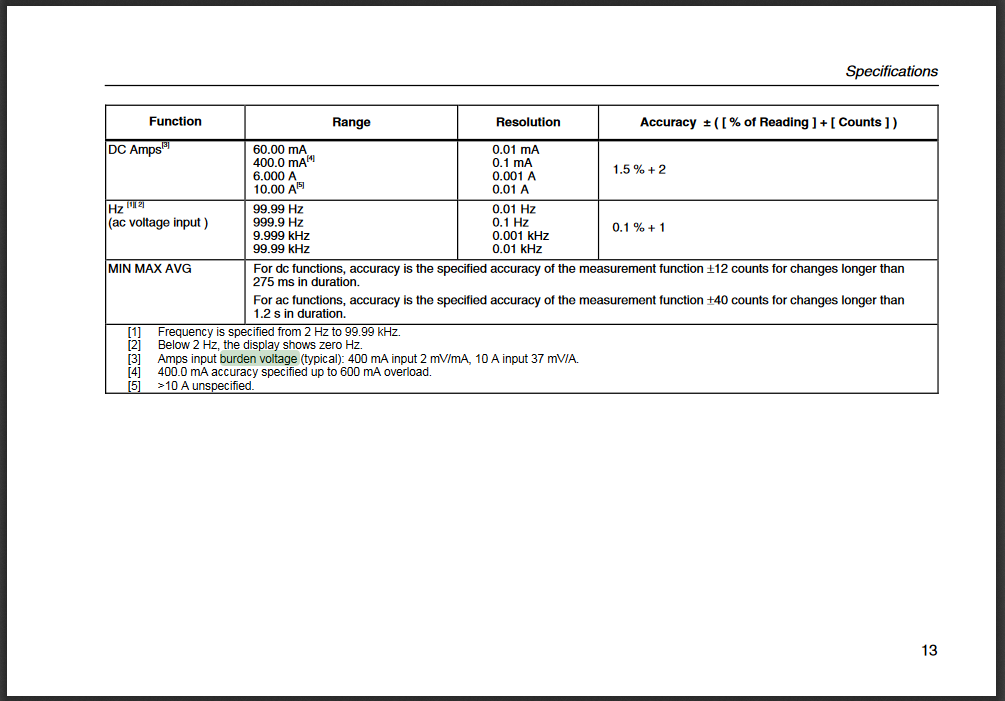As the internal resistance (or input impedance) of a multimeter influences the circuit you are measuring, and therefore influences the accuracy of your measurement, it would make sense to me to if this internal resistance were mentioned somewhere in the multimeter spec sheet.
When multimeters used physical d'Arsonval movement "galvanometer" where a typical industry standard developed around 50 µA for full-scale deflection, that was all the user needed to know. Regardless of current range, 50µA would flow through the galvanometer and the remainder through the shunt resistors.
For example, when measuring DC current through a low resistance load, a couple of Ohms internal resistance can make a big difference, so it would be helpful to know at least its order of magnitude.
However, although some manufacturers (e.g. Fluke) specify the input impedance for voltage measurements, I have not been able to find similar specifications for the current measurement part (e.g. the ammeter internal resistance or shunt resistor values for different measurement ranges).
I know how to measure the ammeter resistance using a load in series and resistors (or decade box) in parallel with the multimeter, but I don't understand why manufacturers do not provide these values in their spec sheets.
Does anyone know? Am I missing something obvious? Am I looking at the wrong specification perhaps?
As electronic DMMs replaced d'Arsonval galvanometer, it took time for the industry to determine how to represent the equivalent effect. Eventually they settled on the term 'burden voltage' to convey equivalent information.

